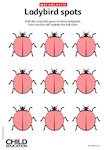Maths Ready-To-Progress Criteria – KS1
Add to My Folder
Find resources to use with the Department for Education’s new ‘ready-to-progress’ criteria for mathematics.
In July 2020 the government published new guidance for teaching mathematics at key stages 1 and 2 to help pupils progress through the National Curriculum. We have suggested a range of resources that can be used to help children to meet the objectives in the criteria. Below are the Key Stage 1 objectives and resources. Find the Key Stage 2 objectives and resources here.
Year 1
| Strand | Objective | Resource |
|---|---|---|
| Number and Place Value | Count within
100, forwards and
backwards, starting with
any number. Reason about the location of numbers to 20 within the linear number system, including comparing using < > and = |
Quick Practice Maths – Number Sequences
What number’s next? – maths interactive whiteboard game Quick Practice – Number and Place Value 100-square grid Blank number line 1 Interactive number square Interactive number line |
| Number Formation | Develop fluency in
addition and subtraction
facts within 10. Count forwards and backwards in multiples of 2, 5 and 10, up to 10 multiples, beginning with any multiple, and count forwards and backwards through the odd numbers. |
Number balls – interactive whiteboard game
Interactive multiplication square Interactive number square Ladybird spots |
| Addition and Subtraction | Compose
numbers to 10 from 2
parts, and partition
numbers to 10 into parts,
including recognising odd
and even numbers. Read, write and interpret equations containing addition (+), subtraction (-) and equals (=) symbols, and relate additive expressions and equations to real-life contexts. |
Addition and subtraction worksheet
Odds and evens Sharing toys worksheet Number sentences worksheet |
| Geometry | Recognise common
2D and 3D shapes
presented in different
orientations, and know
that rectangles, triangles,
cuboids and pyramids are
not always similar to one
another. Compose 2D and 3D shapes from smaller shapes to match an example, including manipulating shapes to place them in particular orientations. |
Shape spotting cards
|
Log in to your account to read
Published 2 October 2020
Reviews
You need to be signed in to place a review.


